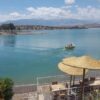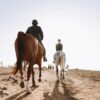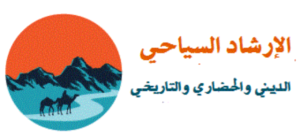The highest peaks of the High Atlas lie within the Jebel Toubkal (4167m) region, North Africa’s highest mountain. Roughly bounded by the Tizi n’Test to the west and the Tizi n’Tichka to the east, this area is by far the most popular trekking destination in Morocco.
The High Atlas range is characterised by jagged peaks and steep-sided valleys, with flat-topped Berber villages and cultivated
green stepped terraces scattered throughout. The traditional culture of the Berbers re- mains little changed after centuries.
There are village gîtes and refuge huts es- tablished in this region and more than 60 official mountain guides who know the area extremely well. A large network of well maintained mule trails wend their way over high passes and dramatic valleys, linking village to village.

There are walks here to suit all abilities- you can set off with mules, porters and cooks for weeks at a time or base yourself in the one of the bigger villages and explore from there.
Many travellers return home warmed and heartened by the hospitality of the Berber people. As the number of visitors increases, so of course does the pressure on the in- habitants.
To maintain the goodwill that is so openly given, it is worth bearing in the mind that the mountain economy is one of basic subsistence farming.
In outlying villages there may be little in the way of surplus food – be generous when buying provisions for yourself, guides and so on.
Always obtain permission to camp if anywhere near a village. Dress modestly (see the Society & Conduct section in the Facts About the Country chapter) – this is extremely important; it may not be obvious, but locals can be terribly offended by what they perceive to be a lack of respect. When staying in village accommodation
be prepared to pay the same rates as in refuges and basic hotels. Take some time to learn a few basic Berber words. Above all, don’t be in a hurry to do anything. It is possible to trek in the Toubkal region year round, but the best time to visit is prob- ably late spring, between April and May. The bulk of the snow will have melted (Jebel Toubkal itself is usually under snow from November until mid-June), spring flowers will be in bloom and the days will be pleasantly warm.
You’ll still need a good sleeping bag and warm clothes as the nights will be chilly. In mid-summer, temperatures in the higher areas never become stifling, but it can be unbearably hot in the lower valleys.

By autumn, temperatures are substan- tially cooler with snow falling on the higher peaks by the end of September.
Late winter can be an excellent time to visit, if you don’t mind night time temper- atures dropping to well below freezing (-20°C on a bad night). The days are sur- prisingly warm, the skies generally clear and the valleys extremely quiet and peace- ful at this time of year.
Jebel Toubkal is an easy two day trek and provided there’s no snow around you don’t need mountaineering skills to get to the top.
Winter conditions, however, can be treacherous (there have been several fatali- ties on the mountain) and at this time inexperienced climbers are advised to trek below the snow line.
Anyone attempting the ascent after snow has fallen should have some winter climb- ing experience. You won’t get to the summit unless you have full alpine gear – and that means ice axes, crampons, wet weather clothing and a very warm sleeping bag.
Altitude sickness, caused by lack of oxy- gen, is a possibility at heights above 3000m. Symptoms can include headaches, nausea, dizziness, a dry cough and insomnia. Symp- toms usually abate as you acclimatise, but if they persist or worsen you must descend immediately (see the Health section in the Facts for the Visitor chapter for more infor- mation).
The usual starting point for Jebel Toubkal and many of the other treks in the area is the village of Imlil in the Mizane Valley, 17km south of Asni.
Other possible starting points are the vil- lages of Setti Fatma and Oukaïmeden in the Ourika Valley.

Information
Guides You don’t need a guide if you just want to whiz up Toubkal and back, but if you’re going further afield or for a longer



